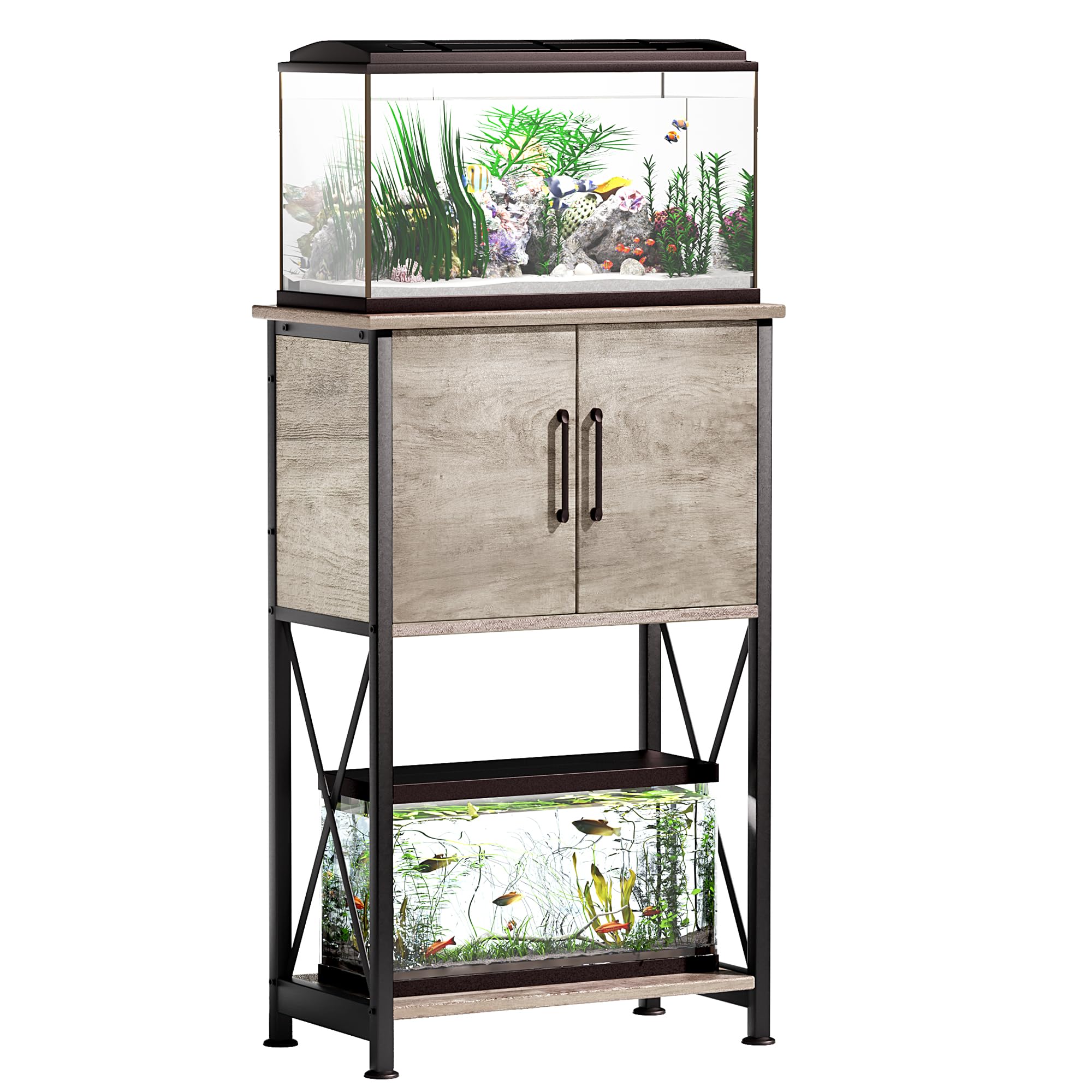Effective Ways to Choose Aquarium Plants for Beginners in 2025
Aquarium plants serve not only as decorative elements in your fish tank but also play a critical role in maintaining a balanced aquatic ecosystem. For beginners in 2025, selecting the right aquarium plants can influence the health of your fish and the overall success of your aquarium. This article will explore effective strategies to choose the best plants for beginners, ensuring that your aquatic garden flourishes with minimal effort.
When deciding on plants, factors such as light requirements, compatibility with fish species, and plant maintenance levels must be considered. Taking into account these aspects will not only enhance the visual appeal of your aquarium but also provide a healthy environment for your aquatic residents. Throughout the article, we will cover the different types of beginner-friendly plants, their care requirements, and tips for successful integration into your tank setup.
By the end of this guide, you will have an understanding of the essential aspects of aquarium plant selection, along with practical tips to maintain thriving plants in your aquarium. Let’s dive into the fascinating world of aquatic flora!
Essential Guide to Beginner Aquarium Plant Selection
When it comes to starting with aquarium plants, understanding the options available is crucial. Beginner aquarium plants are often categorized based on their care requirements, adaptability to different water conditions, and compatibility with various fish species. This section will help you navigate through the options, ensuring you make informed choices.
Understanding Different Types of Aquarium Plants
Freshwater aquarium plants can be broadly classified into several categories: foreground, midground, and background plants. Foreground plants, like **Dwarf Hairgrass** and **Java Moss**, stay short and work well for creating a lush carpet effect. Midground plants, such as **Cryptocoryne** and **Anubias**, provide structure and depth. For the background, **Vallisneria** and **Amazon Sword** are popular choices, offering height and cover.
Selecting the right type of plant depends on your aquarium's dimensions and the layout you envision. For beginners, it's advisable to start with hardy aquarium plants that can tolerate varying conditions and require less diligence in care.
Best Low-Light Aquarium Plants for Beginners
Many beginners face challenges with lighting, especially if they are using standard aquariums without specialized aquarium LED lights. Thus, choosing low-light aquarium plants can alleviate some of these concerns. Species like **Java Fern** and **Pothos** thrive in lower light conditions while still promoting healthy growth and oxygenation in the water. Additionally, these plants help absorb nutrients, reducing algae growth—a common issue in new tanks.
When considering your plant choices, opt for species that will flourish under the lighting conditions you can provide, ensuring a thriving aquatic environment from the start.
Hardy Aquarium Plants: A Beginner's Best Friend
Hardy aquarium plants exhibit resilience against changes in water quality and temperature, making them perfect for newcomers. Plants like **Bacopa** and **Sword Plants** can endure beginner mistakes, such as overfeeding fish or fluctuating water parameters. They’re also adaptable to a range of fish species, making them versatile for community tanks.
Purchasing hardy aquarium plants will set you up for success, minimizing the frequent troubleshooting often required with more delicate species. These plants also support beneficial bacteria, essential for filtering water and enhancing tank stability.
Practical Tips for Aquarium Plant Care
Once you've selected your favorite beginner aquarium plants, understanding their care requirements is vital for keeping them flourishing. Proper aquarium plant maintenance not only benefits the plants but also your fish!
Essential Nutrients for Aquatic Plants
One of the primary goals in maintaining healthy aquarium plants is ensuring they receive adequate nutrients. Utilizing the proper fertilizers for aquarium plants can greatly enhance their growth rates. There are many options available, including liquid fertilizers and substrate fertilizers. Aim for a balanced nutrient dose that caters to your specific plant needs, as some species may require more potassium or nitrogen.
Monitoring these nutrient levels becomes especially important if you encounter common aquarium plant issues, such as yellowing leaves, which can be a sign of nutrient deficiency. Regular water testing can help in tracking parameters, leading to more informed care decisions.
The Role of Light in Plant Growth
Light is one of the most critical components of successful aquarium plant growth. Different plants have varying light requirements; while some thrive in low-light conditions, others may require brighter illumination for optimal development. If using LED lights for aquarium plants, consider the brightness and spectrum that best suits your species.
To evaluate light needs, observe your plants' growth patterns. If you notice stretching or leaning toward the light source, you may need to increase light exposure. Conversely, if your plants exhibit signs of algae overgrowth, consider reducing light duration to balance the aquatic ecosystem effectively.
Aquarium Plant Placement Tips
Effective aquarium plant placement can significantly influence tank aesthetics and plant health. Beginners are encouraged to design their tank layout, placing taller plants in the back and shorter ones toward the front. This approach not only creates depth but also ensures adequate light penetration for all plants.
Also, be mindful of water flow when positioning plants. Some species may do better in sheltered spots to protect them from strong currents, while others might thrive in open areas. A strategically planned layout can enhance both plant growth and the overall visual appeal of your aquarium.
Common Issues and Troubleshooting with Aquarium Plants
As you embark on your aquascaping journey, you may encounter some challenges. Understanding common aquarium plant issues, diagnoses, and solutions will arm you with the knowledge to keep your plants thriving.
Recognizing Aquarium Plant Diseases
Aquarium plants can be affected by various diseases that stem from nutritional deficiencies, improper light conditions, or poor water quality. Identifying symptoms early is essential for effective treatment. Common signs include discolored leaves, stunted growth, or necrosis.
If you encounter these issues, assess your water parameters and lighting conditions first. Sometimes, simple adjustments in your lighting schedule or nutrient dosing can rectify the problem.
Propagation Techniques for Popular Aquarium Plants
Propagation can be a rewarding process, allowing you to expand your aquatic garden at minimal cost. Many beginner-friendly aquarium plants can be propagated through cuttings or division. For instance, you can easily propagate **Anubias** by cutting its rhizome and replanting it. Understanding propagation methods can help you maintain an ever-evolving aquarium, showcasing new growth and plant interactions.
To ensure successful propagation, maintain stable environmental conditions, and monitor plant health closely after transplanting.
Controlling Algae with Plants
In a newly set up aquarium, controlling algae growth can be a significant challenge. Incorporating suitable aquatic plants helps balance nutrients and competition for light, ultimately mitigating algae proliferation. Utilizing fast-growing plants can efficiently absorb excess nutrients, reducing algae's chance to take hold.
If algae continues to be a problem, consider reviewing your tank's nutrient levels and making adjustments to light exposure or water changes accordingly.
The Visual and Health Benefits of Aquarium Plants
Integrating aquarium plants into your fish tank setup as part of an aquatic gardening strategy brings more than just aesthetics; it provides numerous benefits for both fish and the environment.
The Importance of Plants for Fish Health
Aquarium plants contribute to fish health in several ways. They provide shelter, breeding grounds, and security, mimicking natural habitats. Fish feel more secure with hiding spots created by plants, minimizing stress levels and fostering natural behaviors. Certain plants also oxygenate water, which is essential for aquatic life.
Choosing the right plants can create a harmonious habitat, promoting interactions among fish that enhance their overall well-being.
Enhancing Aesthetics with Decorative Aquatic Flora
The visual appeal of an aquarium significantly enhances through well-chosen decorative plants. Use color contrast and varied leaf shapes to create captivating scenes that engage aquarium viewers. Plants not only improve the look of an aquarium but also provide opportunities for engaging children's interest in aquatic ecosystems.
Remember, an aesthetically pleasing aquarium not only uplifts your space but can also become a point of teaching about biodiversity and environmental responsibility.
Seasonal Care for Aquarium Plants
As seasons change, so do the needs of aquatic plants. Monitoring plant health and adjusting care routines is essential to their flourishing growth. For instance, during colder months, you may notice slower plant growth due to reduced light intensity. This shift may require you to adjust feeding schedules and nutrient dosing accordingly.
Incorporate seasonal practices into your aquarium maintenance schedule, allowing you to optimize plant care throughout the year for consistently beautiful results.

Conclusion: Embracing the Journey of Aquatic Gardening
Choosing and maintaining beginner-friendly aquarium plants introduces an enriching hobby that not only enhances your aquatic environment but also supports overall fish health. By understanding the fundamentals of aquarium plant selection, care, and troubleshooting for common issues, you can confidently dive into aquatic gardening. Whether you seek visual beauty or ecological functionality, the right plants can transform your fish tank into a thriving ecosystem.
Invest time in researching and connecting with fellow aquarists, and you will find a world rich with knowledge, techniques, and experiences that can elevate your skills as an aquatic gardener. Enjoy the journey, and let your aquarium flourish!



